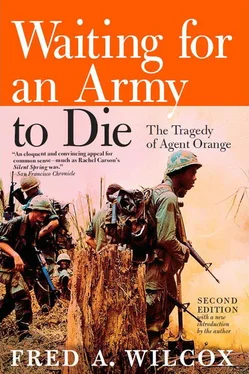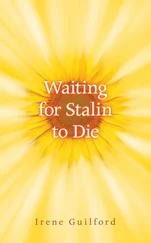Sixty-Fourth Annual National Convention of the American Legion Chicago, Illinois, August 24–26, 1982
RESOLUTION: No. 410 (Iowa)
COMMITTEE: Veterans Affairs and Rehabilitation
SUBJECT: The American Legion Policy on Agent Orange
WHEREAS, the chemical herbicide commonly known as Agent Orange was sprayed throughout Vietnam during the years 1962–1971 to defoliate jungle and rice paddies; and
WHEREAS, the total long-range toxic effects of the defoliant, of which in excess of 10.6 million gallons were reportedly expended by American military forces, remain virtually unknown; and
WHEREAS, the chemical mixture of 2,4-D and 2,4,5-T, which contains a certain amount of the chemical dioxin, has been subjected to partial bans by the Environmental Protection Agency following reports of spontaneous abortions and stillbirths in areas where heavily used in the United States; and
WHEREAS, a significant number of service personnel serving in Vietnam were exposed to these toxic chemicals and have subsequently developed cancer, neurological disorders, liver dysfunction. Severe depression, and other life-threatening diseases; and
WHEREAS, these veterans are now seeking benefits from the VA, to which they believe they are justly entitled, by reason of disease and disability incurred through exposure to Agent Orange; and
WHEREAS, the American Legion is seriously concerned about the effect of Agent Orange on those veterans who served in Vietnam during the time it was used as a defoliant; and
WHEREAS, the American Legion is strongly supportive of the studies and research being conducted by the Air Force, the Center for Disease Control, the Armed Forces Institute of Pathology, the Veterans Administration, etc., on Agent Orange, and has urged the administrator of veterans affairs, the VA Advisory Committee on Health-Related Effects of Herbicides, and the VA Central Office Ad Hoc Committee on the Toxic Effects of Herbicides to proceed without delay using all resources available, to ascertain with scientific validity the effects of Agent Orange on veterans who were exposed to it during their active military service; and
WHEREAS, section 307 of the Veterans Health Programs Extension and Improvement Act of 1979 (Public Law 96-151) mandated the Veterans Administration to undertake a scientific study of the effect of dioxin exposure on veterans; and
WHEREAS, the Veterans Administration negotiated a contract with the UCLA School of Public Health on May 1, 1981, for the design of the protocol of the Agent Orange study mandated by Public Law 96-151; and
WHEREAS, the protocol has been designed, has undergone peer review and was revised as a result thereof, and preliminary steps are being taken to proceed with a pilot study; and
WHEREAS, the American Legion feels strongly that the study itself should be conducted by an independent scientific entity rather than by the Veterans Administration as the results would be more readily acceptable by the Vietnam veterans who were exposed, their families, and the scientific community; and
WHEREAS, the American Legion is aggressively assisting and counseling veterans in the filing and development of claims for benefits provided under title 38, United States Code, and referring those individuals claiming exposure to the persons responsible for the Agent Orange examination program at the nearest VA medical center or outpatient clinic for an appropriate examination; and
WHEREAS, because of the fact that very few claims for service connection have been granted, the American Legion has continually called upon the administrator of veterans affairs and the Department of Veterans Benefits to take a more objective approach in the adjudication of claims for benefits for disease and disabilities resulting from exposure to Agent Orange, until such time that conclusive scientific evidence is available, and to resolve all reasonable doubt in favor of veterans, their dependents and survivors, in claims for benefits based on exposure to Agent Orange, but such urging has been to little or no avail; and
WHEREAS, a significant number of Vietnam veterans have expressed displeasure with the manner in which they were attended to during their Agent Orange examination at a VA medical facility; now therefore, be it
RESOLVED, by the American Legion in National Convention assembled in Chicago, Illinois, August 24, 25, 26, 1982, that the American Legion sponsor and support legislation in the Congress of the United States to amend section 307 of Public Law 96-151 by assigning the responsibility of conducting the epidemiological study of Vietnam veterans who were exposed to any of the class of chemicals known as “the dioxins” produced during the manufacture of the various phenoxy herbicides, including Agent Orange, to an independent scientific agency; and, be it further
RESOLVED, that the American Legion support legislation to amend title 38, United States Code, to establish a mechanism for presumption of service connection for certain disabilities traced to Agent Orange exposure once such presumption is justified by conclusive scientific evidence; and, be it further
RESOLVED, that the American Legion disseminate the most current responsible information on Agent Orange to Legionnaires, Vietnam veterans and their families, and the public through all resources available to transmit such information; and, be it finally
RESOLVED, that the American Legion continue to make careful observation of the Veterans Administration’s Agent Orange examination program to determine whether or not Vietnam veterans reporting to VA medical care facilities claiming exposure are being appropriately examined, and that the examining physicians demonstrate both compassion and thoroughness in the way they receive, examine and treat all Vietnam veterans who present themselves alleging dioxin exposure.
APPROVED
Brown, Michael. Laying Waste: The Poisoning of America by Toxic Chemicals . New York: Pantheon, 1980.
Carson, Rachel. Silent Spring . New York: Fawcett, 1962.
Dux, John, and P.J. Young. Agent Orange: The Bitter Harvest . Sydney: Hodder and Stoughton, 1980.
Ensign, Tod, and Michael Uhl. GI Guinea Pigs: How the Pentagon Exposed Our Troops to Dangers More Deadly Than War . New York: Playboy Press, 1980.
Fuller, John G. The Poison That Fell from the Sky . New York: Random House, 1977.
Hersh, Seymour M. Chemical and Biological Warfare: America’s Hidden Arsenal . Indianapolis: Bobbs-Merrill, 1968.
Linedecker, Clifford. Kerry: Agent Orange and an American Family . New York: St. Martin’s Press, 1982.
Pfeiffer, E. W., Arthur H. Westing et al. Harvest of Death: Chemical Warfare in Vietnam and Cambodia . New York: Free Press, 1971.
Whiteside, Thomas. The Pendulum and the Toxic Cloud: The Course of Dioxin Contamination . New Haven and London: Yale University Press, 1979.
___. The Withering Rain: America’s Herbicidal Folly . New York: Dutton, 1971.
1. Admiral E.R. Zumwalt, Jr., “Report to Secretary of the Department of Veterans Affairs on the Association Between Adverse Health Effects and Exposure to Agent Orange.” May 5, 1990, p.p. 16–17.
2. Ibid., p. 18.
3. Ibid., p. 15.
4. Ibid., p. 19
5. Institute of Medicine. Cancer and the Environment: Gene-Environment Interactions, August 2002.
1. Agent Orange: Information for Veterans Who Served in Vietnam (Questions and Answers) , Office of Public and Consumer Affairs, Veterans Administration, June 1982.
2. Clifford Linedecker, Kerry: Agent Orange and an American Family (New York: St. Martin’s Press, 1982), p. 176.
Читать дальше











